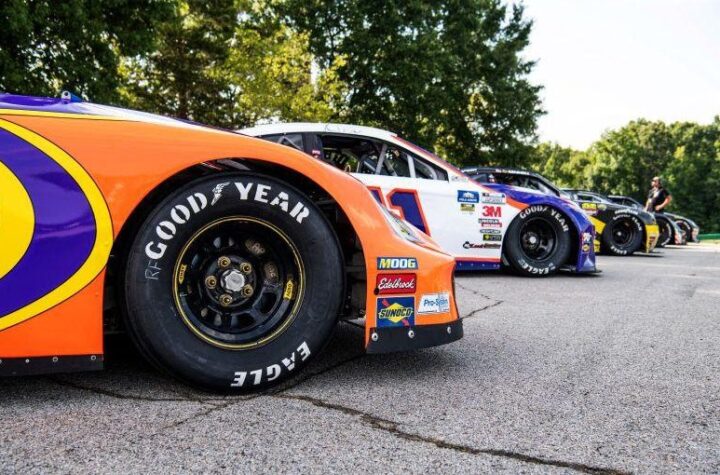

Engineers and developers now have a choice of engine testing technologies following the recognition by the United States Federal Register of the BG3 Partial Flow Dilution sampling (PFD) technology developed by Sierra Instruments for engine particulate emissions, R&D and certification.
Building on this news, the Monterey, California – based company has also extended its global footprint this year by expanding the range of engine and vehicle testing technology it can supply, through the acquisition of CP Engineering, which is based in Malvern, England.
Automotive Industries (AI) interviewed Matthew Olin, President of Sierra Instruments, Martin Hird, Managing Director of CP Engineering, and Del Pier, Vice President of Sierra’s Emissions Division.
AI: What did it mean for your company to have a substantial amount of BG3 versus
CVS transient cycle correlation data deliberated by the EPA (and later, CARB) and for them to allow partial flow dilution system technology for engine certification for particulate matter on transient test cycles.
Olin: I think we made history. It’s a major victory for engine test and certification engineers across the globe. The decision by the EPA and later, CARB has created long overdue flexibility in exhaust emissions testing. We’re delighted to be able to provide an alternative exhaust sampling technology to expensive and often cumbersome full-flow CVS systems.
AI: What are the advantages of PFD?
Olin: The beauty of partial flow is that one measurement device can sample any size engine running on any fuel. Automated calibration and nominal cleaning and maintenance costs are also a benefit. Not only does the BG3 technology reduce testing time to improve productivity, you are also looking at about 10% the initial cost of a CVS system and overlooked costs like 1% the annual energy use versus CVS systems. The result is a huge reduction in cost of ownership over the life of the instrument.
Pier: We are seeing this flexibility replace CVS in next generation test cells as PFD becomes the central instrument in sampling exhaust emissions. Engineers are attaching other equipment, such as NOx, bag units, laser samplers and real time particle counters to the BG3 PFD for the accurate sample it provides.
AI: How does your BG3 partial flow dilution technology work?
Pier: The operational difference between BG3 and CVS is that a CVS first dilutes the full flow of raw exhaust, and then collects Particulate Matter (PM) from a small fraction of that flow. BG3 first proportionally extracts, and then dilutes a small fraction of the raw exhaust. It then collects PM on a gravimetric filter (per regulation) from that flow. The BG3 design premise is to provide equivalent results to CVS by maintaining proportionality of the raw exhaust sample mass flow relative to the exhaust mass flow rate of the engine. The strength of BG3 technology is the patented dilution tunnel, which virtually eliminates the major Achilles heel of any dilution system (including CVS) – the deposition (loss) of particulates on dilution chamber walls as the diluted exhaust sample is transferred to the filter from the raw exhaust stream.
AI: What prompted the development of this technology?
Olin: Sierra traces its roots to ambient air sampling when the Los Angeles basin was getting rid of smog in the 1970’s. We sold off this division and invested into mass flow measurement and control of gases, largely driven by the rapid growth of the semiconductor market in the 1980’s. When Caterpillar, a long time flow measurement customer, approached us in the early 1990’s to commercialize an early partial flow dilution technology, based on their radial inflow dilution tunnel patent, we formed a joint agreement which has resulted in the commercialization of several Caterpillar patents. The original commercialization agreement based on the Caterpillar dilution tunnel patent resulted in the BG1 Partial Flow Dilution system. Caterpillar was looking for an alternative to CVS and the commercially available partial flow systems of the very early 1990’s. Due to their expanded engine power output levels, higher exhaust mass flow rates and elevated test cycle exhaust heat content, off-road engines presented a unique set of challenges to the continued use of CVS systems.
Pier: The idea from the beginning was to position our BG3 partial flow technology as an alternative or replacement for CVS emission testing. But, it seemed a long way off back then.
AI: This leads us to the history behind the purchase of CP Engineering by Sierra.
Olin: Our BG3 was developed in 2003 in response to pending requirements for transient cycle development and certification of non-road engines. As a working partner, CP Engineering played an essential role in the development of the BG3. The BG3 system is based on CP Engineering’s advanced CADET automation software. Given the deep trust and mutual respect that developed over the last ten years, Sierra was ready to take advantage of the expanded global opportunities that a closer working relationship with CP offered. Now called Sierra-CP Engineering and formally classified as Sierra’s Automotive Testing Group, we will now be able to offer comprehensive test cell automation and benefit from CP’s proprietary CADET V14 test automation technology, which combines accurate multi-channel control with high-speed data acquisition optimized specifically for applications such as engine, powertrain and vehicle emissions and component test rigs.
What about your global footprint?
Olin: CP is extremely strong in the United Kingdom, India, Malaysia, Australia, and China, and we (Sierra) are market leaders in the United States with our BG3 system. Essentially, we are repackaging the group and leveraging the strength of an existing installed base to grow the business. Given Sierra’s size and strong brand and CP’s leading technology, we have formed a new company that has hit the ground running, receiving immediate interest from customers across the globe.
Hird: It creates new and interesting options for customers. We believe we are a good fit in the US market, and that we bring added value by enabling Sierra to offer products and solutions that some of the larger competitors do not have. Outside of the USA, the Sierra-CP Engineering has the credibility that comes with size, product mix, and the number of OEMs we already supply. We are also now in a position to provide turnkey test cells and upgrades for customers in both the established and emerging markets.
AI: What is driving the market?
Olin: Regulation and global competitiveness. Everyone in China wants a car and there is huge potential to help engineers create more efficient vehicles. As Tier 1 suppliers compete in the global market by tapping into growth markets like China, the pressure to increase testing productivity is front and center. Many of our customers are looking at upgrading their installed legacy equipment. In addition, new clean energy-driven technologies, are further growing the demand for new testing technologies in hybrid and electric vehicles, for example. We are very encouraged by the interest we’re seeing and are keen to help optimize productivity in wide variety of industries.
AI: Given the sophistication of simulation programs, what is the future of physical testing?
Olin: Simulation programs are very important and can take design to within a certain percentage of the target parameters, but the trend we are seeing is that engineers still want to complement simulation with efficient and flexible real-world testing. For certification, a physical engine or vehicle will still need to be tested and verified.
Hird: The two processes run much closer together – with research and development and production testing running in parallel, in order to reduce time to market. Our systems support the testing process from the early prototype stage, through pre-production to certification. Over this time, the design of the engine can change quite dramatically, so flexible solutions are vital.
AI: Tell us a little about your vision/strategy for your global expansion.
Olin: Sierra has been well known in the flow measurement and control market for nearly 40 years and has over 150 locations in over 50 countries. The recent formation of our Automotive Testing Group called Sierra-CP Engineering gives our leading BG3 technology a real home and broader growth opportunities. In addition, as part of the acquisition, Sierra has also acquired CP India located in Pune, India and is in the process of forming a joint venture company in Beijing, China. We will be expanding on the strength of our differentiation in the market, which is based on innovation and flexibility. We are very nimble, and are perfectly positioned in terms of size. Our core value is that we listen to our customers, and do not try to force a “one size fits all” solution on them. We have the advantage of being the owners of the technology we provide. This means we can adapt the technology to meet the needs of the customer, rather than being forced to take an off-the-shelf solution. In fact, we supply most of the larger companies in the automotive industry. Closer to home, another notable fact is that we are now the only US-owned complete turnkey automotive testing company. This is important in the US because it provides local presence, local support, and a US business culture.
Hird: There are new economies of scale with the formation of Sierra-CP Engineering. The strategy fits well in the US market, where there are few US owned companies which can offer products through to turnkey solutions. China is also a huge growth opportunity for us. They are endeavoring to leapfrog existing technologies, and we are excited to be involved at this early stage of this initiative.












More Stories
What You Should Know Before Filing a Car Accident Claim
Injured in a Car Accident in St. Louis? Here’s What to Do Next
Historic Sportscar Racing (HSR) and Goodyear Announce Multi-Year Partnership